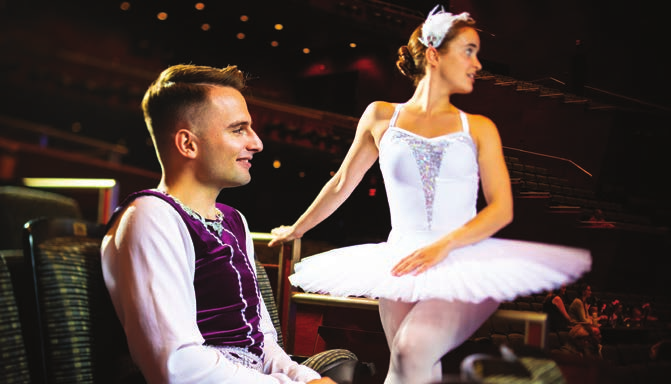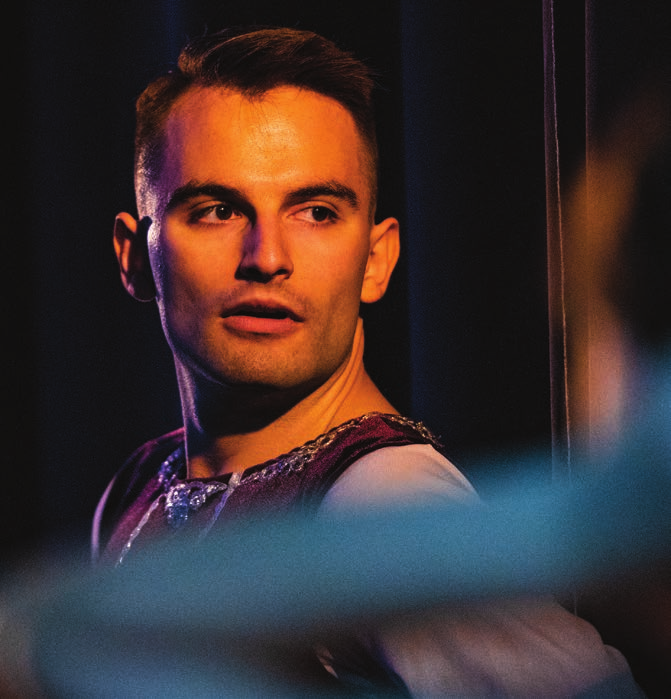Imagine two dancers on a stage. For a moment they stand frozen, poised and waiting to begin. Only with the first swell of music will they begin to move. Their movements are precise, yet flow together to create the energy they need to carry on to the next step, the next turn. This movement of energy used to be known as vis visa-living force-now referred to as kinetic energy.
Physics and ballet are often paired, using the former as a means to explain the latter. After all, ballet is all about the movement of energy-physics in its most visual form. Yet rarely are the two experienced and understood as one and the same.
For Charles Nokes and Laura Gillard ('13 BSc, '15 MSc), both talented dancers and graduate students, physics and dance go hand in hand. Their dancing and their studies are an exploration of the movement and momentum of energies that coexist in their lives and world. The pair are well-acquainted with the importance of balance, and the nature of cause and effect in both their intellectual and physical pursuits.
"Much like our approach to understanding the planet, if you concentrate on only one part of a larger movement, you're going to get pulled out of balance," Nokes says of his experiences as a dancer. "Balance isn't a static thing; it's constantly evolving, shifting, moving in different directions. Keeping your whole body connected to this movement is key."
Maintaining balance
In their studies, Nokes and Gillard are likewise exploring the importance of balance. Gillard-now in the fourth year of her PhD-studies the interaction between glacier meltwater and icebergs from Greenland that feed into our oceans and the influence the oceans have on melting the Greenland Ice Sheet by examining the effects on ocean circulation. "As an ocean scientist, I am seeing how delicate this balance is," says Gillard. "In my lifetime alone, I'll see physical changes to Earth's glaciers, oceans, and subsequently our climate."
"Balance isn't a static thing; it's constantly evolving, shifting, moving in different directions. Keeping your whole body connected to this movement is key."
And speaking of observing changes, during his undergraduate degree in engineering physics, Nokes was part of the AlbertaSat team, involved in creating and launching Ex-Alta 1, the first student-designed cube satellite. Since its launch in spring 2017, the cube satellite has orbited Earth every 90 minutes. (Ex-Alta 1 was scheduled to burn up in the atmosphere just prior to the printing of this issue of Contours.) Each orbit measures patterns of space weather, similar to the data that Nokes is using for his graduate research.
By studying space weather patterns focusing on storms, Nokes examines how energy from the sun may be causing perturbations in Earth's magnetic field. "Lots of people know about solar flares and the aurora, but not everybody learns about what drives space weather, and how it affects us here on Earth," he explains.
To these scientists, the effects space weather and fresh water cycles have on our global climate are obvious. As the dynamics of each shift and change, so too does Earth, as our planet strives to maintain a balance of its own.
At any given moment around us, Earth is in motion, a constant and dynamic entity. Things are growing and dying, seasons are changing, and climate is affecting the speed of change. To the untrained eye, these changes may not be so obvious. But Gillard, Nokes, and their fellow scientists know everything is interconnected, regardless of whether we can see it at first glance.
All the world is their stage
Nokes and Gillard have come to understand through their dance and studies that the movement of energy-on both the planet and the stage-is a delicate balance.
"By studying engineering physics and space weather, I've got a much larger understanding of how Earth's systems are interconnected and how various little things can influence so many large changes," explains Nokes. "It's also a tool for me to keep working towards my values in terms of being environmentally conscious and taking action."
"The more we learn, the more questions we encounter," adds Gillard.
For these two dancers turned scientists, maintaining momentum in the quest to achieve balance in the movement of energy on stage and on Earth will never stop.

